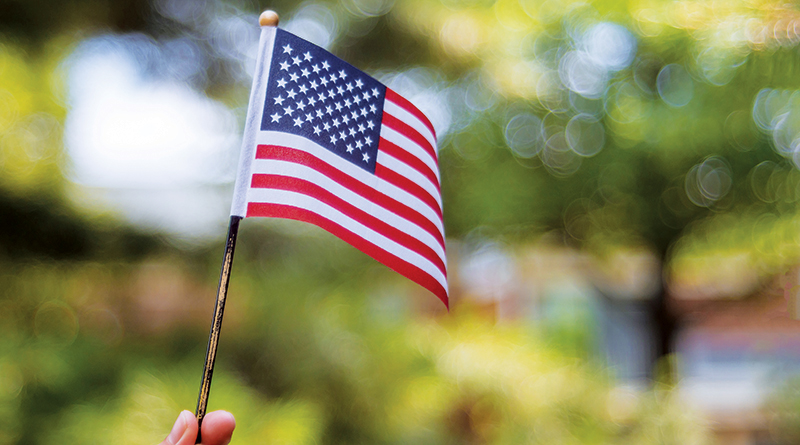What Is Flag Day All About?

Flag Day, June 14, is a celebration of the American flag occurring each year on the anniversary of the flag’s official adoption. It’s not a federal holiday, but its observance is traditionally proclaimed yearly by the president of the United States. On Flag Day, many towns and cities hold parades and events to celebrate the flag, and the colors are to be flown at all government buildings.
Flag Day was celebrated as a patriotic occasion for many decades, but it was President Woodrow Wilson who made the observance official by a presidential proclamation on May 30, 1916.
What we know fondly as the “Stars and Stripes” was adopted by the Continental Congress as the official American flag on June 14, 1777, in the midst of the Revolutionary War. Colonial troops fought under many different flags with various symbols — rattlesnakes, pine trees and eagles — and slogans — “Don’t Tread on Me,” “Liberty or Death” and “Conquer or Die,” to name a few.
The Declaration of Independence made the adoption of an American flag necessary. Previously, each colony or special interest had its own flag.
The origin of the official flag has become part of American folklore. Although many believe Betsy Ross designed and sewed the first flag, there is no proof of this.
However, what we do know is this:
- The original 1777 flag was designed to represent the 13 original colonies with 13 white stars on a blue field and 13 alternating red and white stripes.
- One of the first flag designs had the stars arranged in a circle, based on the idea that all colonies were equal.
- In 1818, after a few design changes, Congress decided to retain the flag’s original 13 stripes and add new stars to reflect each new state that entered the union.
- Today, there are 50 stars, one for each state, but the 13 stripes remain.
Interestingly, the current American flag was designed by a high-school student from Lancaster, OH, named Bob Heft. Even though his history teacher gave him a “B-” for not knowing how many states the Union had, Heft submitted his design to the White House (unprompted) in anticipation of Hawaii and Alaska joining the Union. To his surprise, President Eisenhower called him. Today, it’s his 1958 design which now is our 50-star American flag. (Reportedly, his teacher changed his grade to an “A”).
In 2024, there are nearly 50 days of national significance designated for flying the American flag, some requiring it to be flown at half-staff. If you fly the flag on those days or preferably display the flag daily be aware there are several general guidelines along with additional rules of etiquette. They are:
- When the flag is hung vertically on a wall, window, or door — either horizontally or vertically — the Union (the blue section with stars) should be to the observer’s left.
- The flag should not be displayed on days when the weather is inclement.
- It’s customary to display the flag only from sunrise to sunset on flagstaffs in the open. However, if illuminated, it can be displayed at night.
- The flag never should be displayed upside down unless it is a signal of dire distress.
- The flag never should touch anything underneath it, such as the floor, ground, water, or merchandise.
- Avoid using the flag for advertising purposes.
- Keep the flag clean and undamaged.
- When displayed with other flags, the U.S. flag should be first and centered.
- Additionally, if you fly your state’s flag on the birthday of your state (Indiana was admitted to the Union on Dec. 11, 1816), the American flag always should be in the superior position.
Finally, the next time you gaze upon the symbol of our nation’s freedom, pause and reflect on the flag’s origins, symbolism and history — and what the American flag means in your life.
- What’s New In The New Year? - December 19, 2025
- Who You Calling Santa Claus? - December 5, 2025
- Do’s And Don’ts Of Veteran’s Day - November 7, 2025


